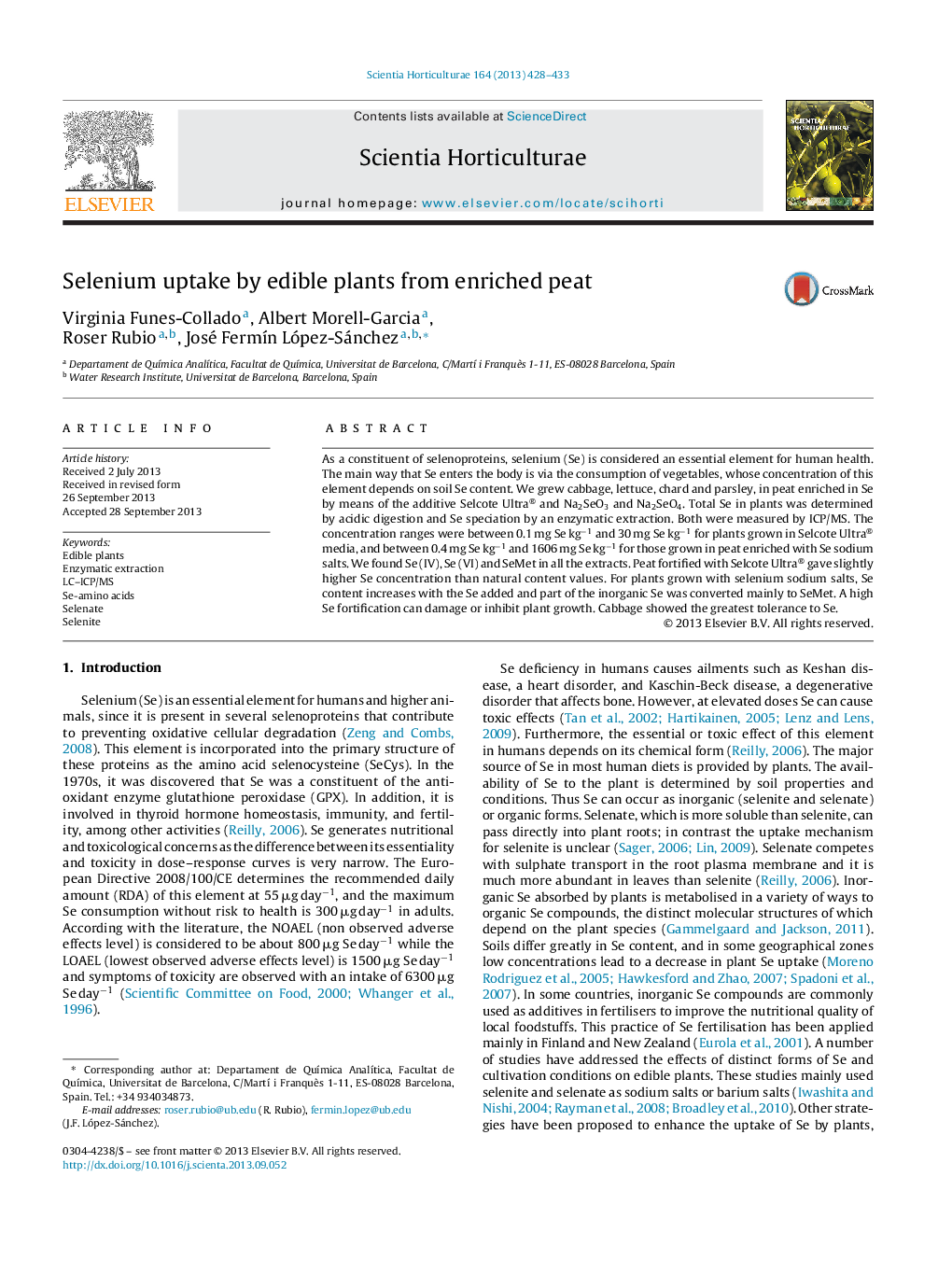| کد مقاله | کد نشریه | سال انتشار | مقاله انگلیسی | نسخه تمام متن |
|---|---|---|---|---|
| 4567089 | 1628834 | 2013 | 6 صفحه PDF | دانلود رایگان |

• Selenium species present in edible plants, grown in Se-enriched peat, are studied.
• Selcote Ultra® and selenium sodium salts are assayed to increase uptake of Se.
• Fortification with Se sodium salts increases Se content in plants.
• Plants biotransform inorganic Se mainly to SeMet.
• Contents over 10 mg Se kg−1 in peat can damage or inhibit plant growth.
As a constituent of selenoproteins, selenium (Se) is considered an essential element for human health. The main way that Se enters the body is via the consumption of vegetables, whose concentration of this element depends on soil Se content. We grew cabbage, lettuce, chard and parsley, in peat enriched in Se by means of the additive Selcote Ultra® and Na2SeO3 and Na2SeO4. Total Se in plants was determined by acidic digestion and Se speciation by an enzymatic extraction. Both were measured by ICP/MS. The concentration ranges were between 0.1 mg Se kg−1 and 30 mg Se kg−1 for plants grown in Selcote Ultra® media, and between 0.4 mg Se kg−1 and 1606 mg Se kg−1 for those grown in peat enriched with Se sodium salts. We found Se (IV), Se (VI) and SeMet in all the extracts. Peat fortified with Selcote Ultra® gave slightly higher Se concentration than natural content values. For plants grown with selenium sodium salts, Se content increases with the Se added and part of the inorganic Se was converted mainly to SeMet. A high Se fortification can damage or inhibit plant growth. Cabbage showed the greatest tolerance to Se.
Journal: Scientia Horticulturae - Volume 164, 17 December 2013, Pages 428–433